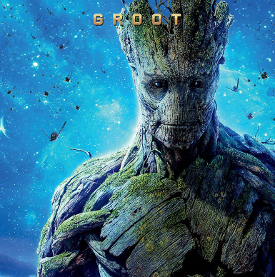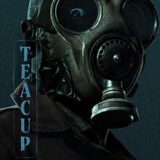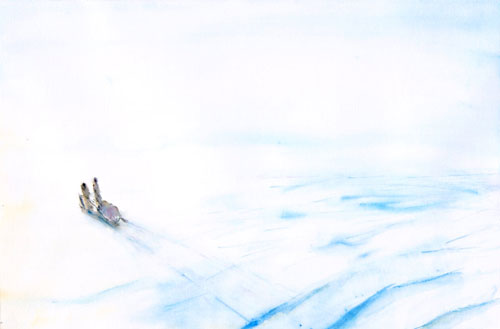
part 1 * part 2 * part 3 * part 4 * part 5
I was planning to finish my mini series on art inspired by Ursula Le Guin with a potpourri of illustrations for her other books. But as it turns out, the only book outside the Earthsea series which has received consistent attention from artists and illustrators is The Left Hand of Darkness. The illustrations I selected for all her other books taken together did not even fill a regular blog post! Clearly, there are whole imaginary worlds left to be visually explored.
If I had to pick one book by Le Guin to put on a list of the 20th century’s most important novels, I would have picked The Left Hand of Darkness anyway: not just for its extraordinary storyline full of understated emotion, and for its bold exploration of what a human society would be like if there was no gender binary – but also for its storytelling economy (the book is less than 200 pages thick), and for the crystal clearness of the language.
The story tells of the mission of Genli Ai, an envoy sent alone to the wintry and hostile world of Gethen, whose inhabitants are ambisexual: most of the time they are neuter, but they go through a periodic cycle of sexual activity during which each person can manifest as either male or female – which also means that everyone can become pregnant. In this society, Genli, who is a regular human male, is regarded as a “pervert”, and treated with ridicule and suspicion. But he finds one supporter for his mission, who is willing to risk and lose everything in order to support Genli’s mission, even despite Genli’s initial profound mistrust.
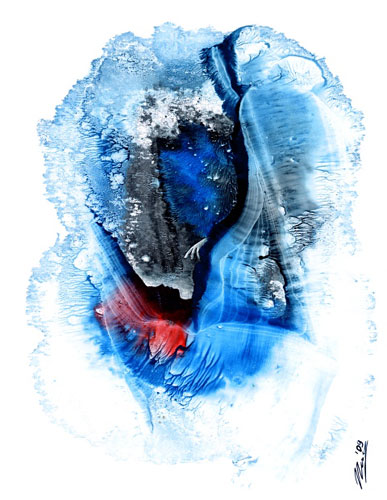
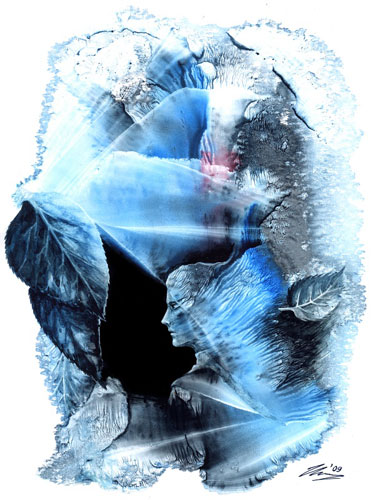


Some while ago, I stumbled across this beautiful series of monotypes by Russian artist Ekaterina Shemyak, which illustrate the Gethenian legends that are woven through the main storyline. They were part of an exhibition of artwork inspired by Le Guin’s writings, which was organised in Moscow in 2009, to honour the author’s 80th birthday.
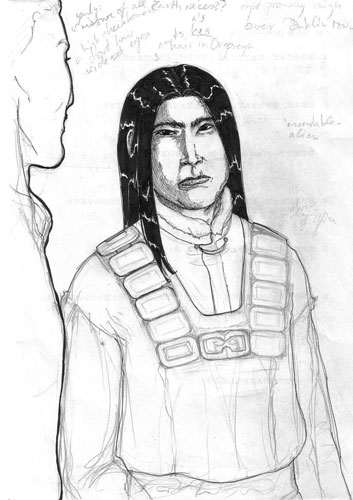


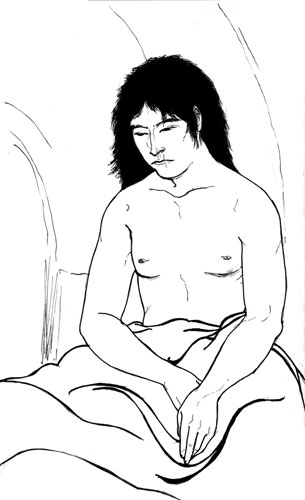

A lot of thought must have gone into these character sketches by Belgian artist O Melton: He does a fine job capturing Genli’s gaunt figure which is a head taller than most of the Gethenians. But I particularly love his take on Estraven, Genli’s ally, friend, beloved: it is not easy to make a character convincingly gender ambivalent, but I think particularly the last sketch of Estraven in this series does a fine job of it. So does the illustration by Evan Dahm, which follows below.
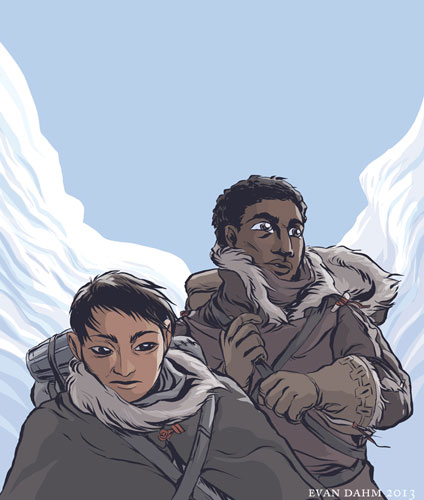


Most of the artists who have taken on this book, have focused on the two main characters and their relationship, which goes from initial mistrust, to an intense friendship/love, when they are forced to make their escape across the deadly expanse of Gethen’s polar ice cap. Eventually, Genli’s mission succeeds thanks to Estraven’s clever strategy, but Estraven him/herself has nowhere left to go.
My own take on the story was rather more focused on the landscapes and environments: the gloomy dark city of Erhenrang, the intimacy of Estraven’s private abode, the vast white expanses of ice the two of them cross with their sled. The watercolour which opens this blog post was a bit of a throwaway piece done after I first read the book. Later, I picked up the idea for an assignment for my Science Fiction and Fantasy certificate from London Art College: the task was to create a DVD cover draft for a fictional movie, and I went hard out and cast and production designed the whole thing… now I only need to find a producer! — A yes, and then there is that pesky question of the movie rights. Well, one can dream! 😀
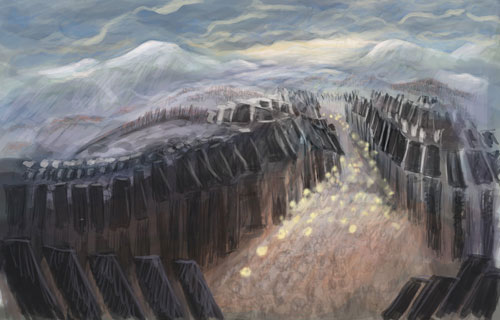


All images are copyright the respective artists, and may not be reproduced without permission.




